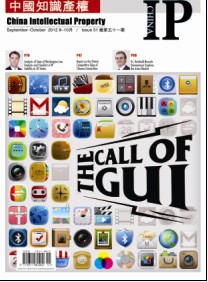
Due to the perpetual accumulation of electronic technology and emergence of various different technologies, almost all electronic products are facing fierce competition. Since general consumers find that the functions of various electronic products seem similar with each other, user experience has been placed under the spotlight. The graphical user interface (GUI) seems to be simple, but in reality it is virtually a human-machine system engineering which combines computer science, aesthetics, psychology, behavioristics, and commercial analysis into a single mechanism. It emphasizes the principle that human, machine and environment should all be taken into consideration in the designing process when composing a system. GUI contains two primary parts: a visual experience and an interactive operation. Combined they consist of tables, windows, menus, icons, buttons, etc. There is no doubt that GUI is the fruit of human intelligence and should receive IP protection.
The patent disputes between Apple and Samsung have proven that there is no global consensus so far on how to legitimately protect GUI. At present, the U.S., EU, Japan, South Korea, Australia and Brazil clearly provide that GUI should be subjected to design protection, and Taiwan has included GUI into design patent in its newly amended patent law as well. However, there is no specific provision for GUI protection in mainland China. For the particularity of GUI, based on the diversified IP laws and regulations of different countries and regions as well as statistics, the cover story of this issue carries out an in-depth discussion of the best approach to GUI protection, whether it should be included in design patent protection, and if so, how to provide and enforce that protection.
|
Copyright © 2003-2018 China Intellectual Property Magazine,All rights Reserved . www.chinaipmagazine.com 京ICP备09051062号 |
|
|



